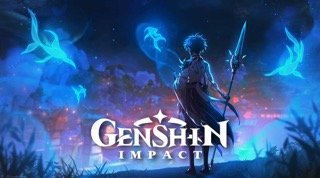เว็บเติมเกมฟีฟาย ผ่าน UID
บริการเติมเกมฟีฟาย uid ผ่านระบบอัตโนมัติ ใน 3 ขั้นตอน เพชรเช้าทันที รองรับทรูวอเลทและพร้อมเพย์
วิธีการเติมเพชร
- กรอก UID (คลิกดูที่ "วิธีเติม")
- เลือกราคา
- เลือกการชำระเงิน
- กดปุ่ม "ชำระเงิน"

เว็บเติมเกมฟีฟาย ผ่าน UID
บริการเติมเกมฟีฟาย uid ผ่านระบบอัตโนมัติ ใน 3 ขั้นตอน เพชรเช้าทันที รองรับทรูวอเลทและพร้อมเพย์
แนะนำเว็บ เติมเกมฟีฟาย uid ราคาถูก บริการเติมเกมผ่านเว็บดีกว่าเติมเองในเกมยังไง แน่นอนว่า เติมเกมกับเว็บสามารถเติมในราคาที่ถูกกว่า คุ้มกว่า ยิ่งถ้าเติมเกมฟีฟายผ่าน uid จะปลอดภัย 100% จึงทำให้ผู้เล่นส่วนมากหันมาเติมเกมผ่านเว็บกันมากขึ้น เดี๋ยวนี้เว็บเติมเกมรองรับการจ่ายเงินแบบอัตโนมัติผ่าน พร้อมเพย์ และ ทรูมันนี่วอเลท
เมื่อชำระเงินเสร็จระบบจะเติมเกมให้เองอัตโนมัติ สะดวกสุดๆ ไม่ต้องรอแอดมินตอบ เติมได้ด้วยตัวเอง อยากเติมตอนไหนก็ทำได้ 24 ชั่วโมง สำหรับเกมฟีฟาย free fire นั่น เป็นที่นิยมย่างมากในปัจจุบัน มีการเติมเกมฟีฟาย uid อยู่ตลอด
จะหาเว็บที่เติมเกมที่เติมง่ายไม่ยุ่งยากนั่นหายาก ทางเราจึงอยากจะแนะนำเว็บเติมเกมที่ใช้งานง่ายที่สุด สามารถเติมเกมฟีฟาย uid คุ้มๆ ได้ในเพียง 3 ขั้นตอนเท่านั้น
สำหรับเว็บเติมเกมฟีฟาย uid ราคาถูก ที่ทางเราแนะนำนั้น สามารถเติมได้เฉพาะไอดีไทยเท่านั้น ก่อนเติมลูกค้าควรอ่านรายละเอียดก่อน ราคาในการเติมมีให้เลือกตั้งแต่หลัก 10 20 50 จนถึงราคาพัน บาท หรือแพ็คเกจเติบโตและอื่นๆ สามารถเลือกเติมได้ตามงบของลูกค้าได้เลย
หลังจากชำระเงินเเล้วเพชรจะเข้าแทบทันที หากไม่เข้า ให้รอ 2-3 นาที ถ้ารอนานกว่านี้แนะนำให้ทักแจ้งแอดมิน
การชำระเงินมีให้เลือก 2 แบบ พร้อมเพย์และทรูมันนี่วอเลท ซึ่งวิธีการจ่ายก็ง่ายมากๆ เพียงสแกน QR code หากเข้าในโทรศัพท์ ให้แคปรูปแล้วนำรูปไปอัพโหลดในแอพจ่ายเงิน เพียงเท่านี้ก็จะสามารถจ่ายค่าบริการ เติมเกมฟีฟาย uid ราคาถูก ได้แล้ว สะดวกสุดๆ
เมื่อทำการชำระเสร็จแล้ว ให้เข้ามาหน้าเว็บ รอจนกว่าหน้าเว็บจะมีการอัพเดท โดยจะเด้งข้อความว่าชำระเงินสำเร็จแล้ว เพียงเท่านั้นก็เข้าเกมรอรับเพชร free fire ได้เลย
โปรดเก็บสลิปการชำระเงินเติมเกมฟีฟาย uid ไว้ทุกครั้ง ในกรณีชำระเงินแล้วระบบไม่เติมเกมให้ กรุณาติดต่อแอดมินเพื่อแก้ไข มีคนคอยบริการตลอด
1. กรอก uid สำหรับเติมเพชร free fire กรุณาตรวจสอบให้ถูกต้องก่อนชำระเงิน
2. เลือกแพ็คเกจราคาต้องการ เติมเกมฟีฟาย uid
3. เลือกรูปแบบการจ่ายเงิน และกดชำระเป็นอันเสร็จเรียบร้อย
เมื่อเลือกการชำระเงินแบบใดต้องสแกนจ่ายในแอปพลิเคชันนั้นๆเท่านั้นเช่น ถ้าลูกค้าเลือกชำระผ่านพร้อมเพย์ ต้องสแกนจ่ายในแอปพลิเคชันธนาคารเท่านั้น ถ้าเลือกแบบทรูมันนี่วอเลท ก็ต้องสแกนจ่ายในทรูมันนี่วอเลท เพียงเท่านี้ก็จะสามารถ เติมเกมฟีฟาย uid ได้แล้ว
หากชำระเงินเรียบร้อยแล้วเพชรยังไม่เข้า ให้ติดต่อแอดมินภายในวันนั้นเพื่อความรวดเร็วในการแก้ไข
เมื่อลูกค้าชำระเงินเสร็จแล้ว เพชรจะเข้าทันทีหรือภายใน 2-3 นาที กรณีชำระผ่านพร้อมเพย์ แต่ถ้าลูกค้าเลือกเป็นเติมเกมฟีฟาย uid ทรูมันนี่วอเลท เพชรจะเข้าทันที
แน่นอนว่าปลอดภัย 100% เหมือนเติมในเกม แต่ที่สำคัญคือในเว็บถูกกว่ามากนั่นเอง แต่ถ้าหากการเติมเกมแบบใช้ username password แบบนี้จะไม่ปลอดภัย เสี่ยงต่อการโดนแฮกหรือดึงเพชรคืน เพราะฉะนั้นการเติมเกมฟีฟาย ที่ราคาถูกและปลอดภัย ต้องเติมผ่าน เติมเกมฟีฟาย uid เท่านั้น
ต้องการเติมเพชรฟีฟายราคาถูก? คลิกที่นี่ 👉 เติมเกมฟีฟาย uid



